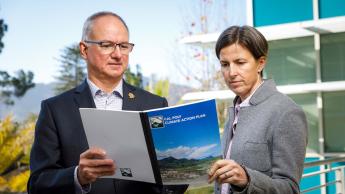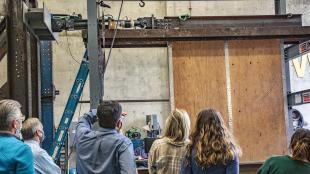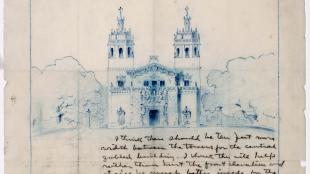Cal Poly Professors Adrienne Greve and Michael Boswell Are Shaping the Field of Municipal Climate Action Planning

Addressing climate change will require an approach that accounts for nearly every aspect of human civilization—including, fundamentally, the cities where we live. As professors within the Cal Poly College of Architecture and Environmental Design’s City and Regional Planning Department, Adrienne Greve and Michael Boswell are acutely aware of this, which is why they’ve been working for more than 15 years to develop policies, plans, texts and frameworks to give city officials the tools they need to create more sustainable built environments.
Their book, Climate Action Planning: A Guide to Creating Low-Carbon, Resilient Communities, is the de facto textbook at other universities for teaching students how to plan sustainable cities. It’s also in use across the country as the most comprehensive manual for local and city governments working on the science and practice of climate action policy.
The thrust of most of this work is focused on how city and regional planners can help communities cut greenhouse gas emissions and build sustainably to prepare for climate change. This includes methods for looking critically at the built environment, then adapting existing infrastructure and implementing new standards in future construction. A premium is put on making use of renewable energy like wind and solar, ecologically conscious practices in industry, and site analyses that account for natural phenomenon like flooding and wildfire. Fossil fuel mitigation is also a factor across the spectrum, including in transportation, manufacturing and even how we provide basic domestic amenities, like indoor heating.
In 2013, Boswell launched and directed the California Climate Action Planning Conference with Greve’s support, an event that has brought together more than 200 professionals to compare state of the art practices. They’ve also consulted for the U.N. and the World Bank in different capacities on climate action planning and helped to write and present climate planning strategies in international settings that span the globe from Germany, Norway and France (Boswell), to Uganda, Tanzania, Ethiopia, Turkey and India (Greve).
Closer to home, they had a hand in drafting the California Climate Adaptation Planning Guides for the State of California and the California Office of Emergency Services. Greve and her students also cowrote Cal Poly’s Climate Action Plan, which is currently being implemented to guide agricultural land management, public transportation plans, and energy audits for buildings. Certain initiatives are ahead of schedule, according to Greve, like the university’s pursuit of solar power.
Other important work on their resumes includes serving as members of the Cal Poly Initiative for Climate Leadership and Resilience, an interdisciplinary collective of Cal Poly faculty training the next generation of climate leaders. Meanwhile, Greve and her City and Regional Planning students can claim authorship of climate action plans that have been implemented by the City of the San Luis Obispo and the City of Benicia.
Their work also includes their day jobs as instructors and, for Boswell, his role as the department head for City and Regional Planning. “When we started doing some of this work more than a decade ago,” he says, “this was still a very novel field in terms of how cities and local governments approached climate action planning. Since then, we’ve had the opportunity work on a lot of projects that have brought together some of the best minds and practices in the field to rapidly advance it to the next stages.”




